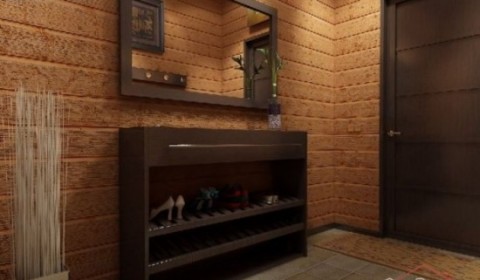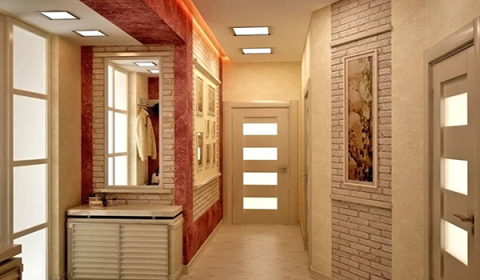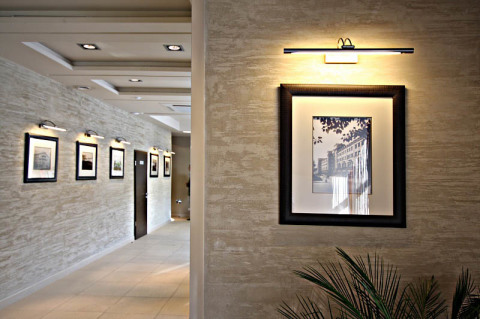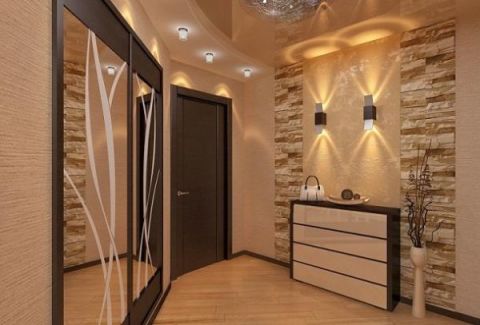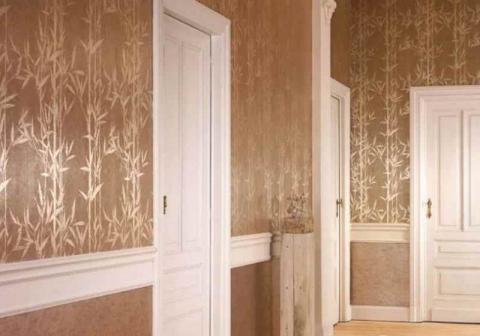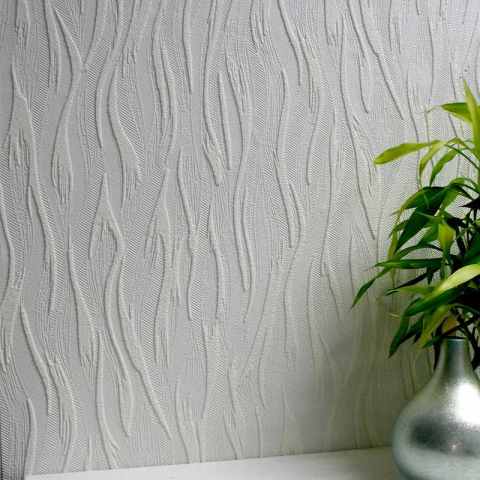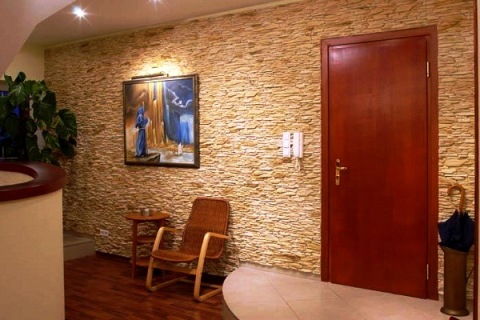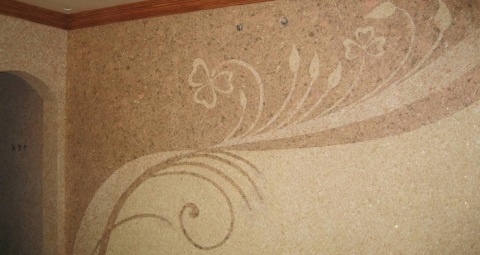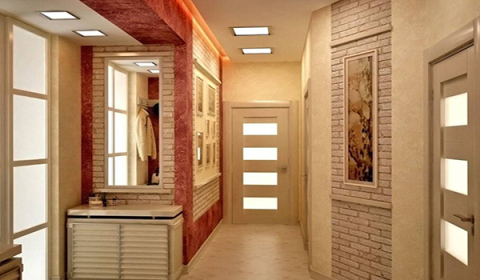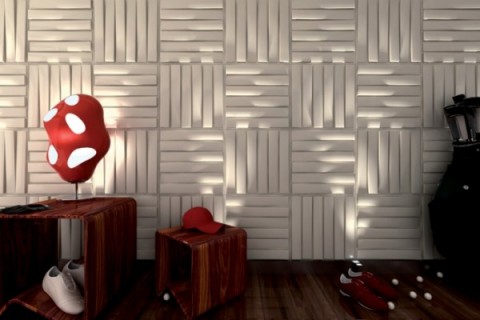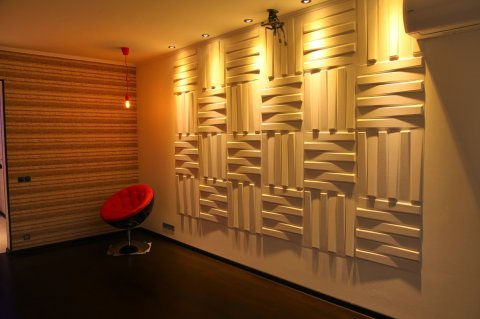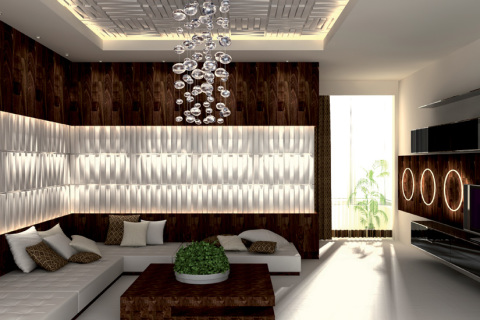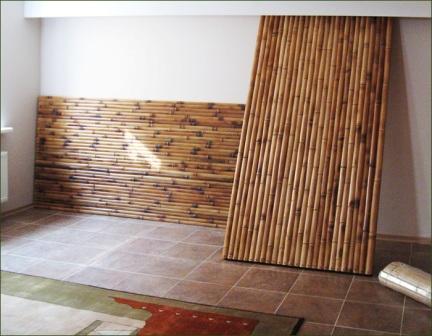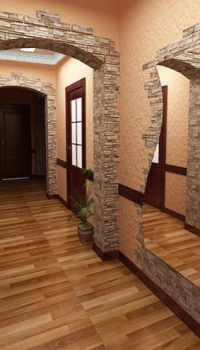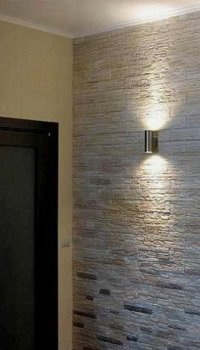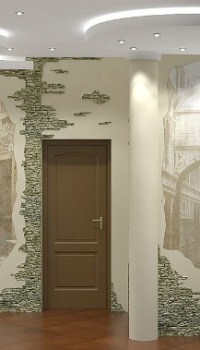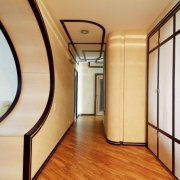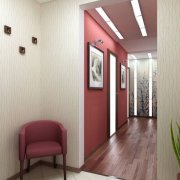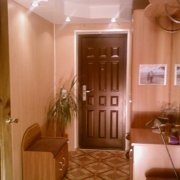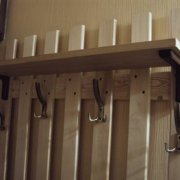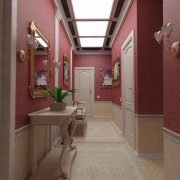How to decorate the walls in the hallway and how to do it
The options for decorating the walls in the hallway are quite different. This is a meeting room. From it begins the house, office, cottage. The operation of the hallway of the room occurs more often than the rest, because it is couriers, workers and other working personnel who do not go beyond it.
It is this room that feels all the temperature changes, so it is very important to choose decorative materials for the walls in the hallway, not just aesthetic, but also high-quality, given the above factors. On the video in this article and photo you can see ready-made solutions.
The content of the article
Recommendations for the selection of materials
Finishing materials for the walls in the hallway must be selected adhering to certain principles:
| Wear resistance | The corridor takes on the main load, so this factor must be taken into account when selecting the material. |
| Practicality | The material for the surface should be selected practical - non-marking. And this is the main rule. Even if you are very pedantic, do not forget that the hallway is most in contact with the entrance. |
| Cleaning | Materials should be easy to clean. This rule directly follows from the previous one. |
Attention: Materials for wall decoration in the hallway must meet the above principles, otherwise they will quickly become worthless.
Different types of plaster
The ceiling of the wall in the hallway can be finished with this material alone. Any kind of plaster is suitable here.
This is probably one of the few places where imagination for creativity can take off. But it should be borne in mind that any kind of decorative cladding requires a carefully prepared and smooth work surface. An exception to this rule are panels with wireframe installation.
- Leveling the work surface is the main task if you want to get a good repair.
- Wall painting is a continuation or beginning of the interior of the whole house.
- Focus on one piece of decor. For the entrance hall - floor or door. They can be made in one color to complete the design combination.
- Focus on the walls. Using paint, you can not only increase the space, but also stretch it in height. To do this, draw vertical lines acrylic paint.
Currently, the variety of finishing materials in construction stores is amazing. The current plaster, unlike its predecessor, does not need to be kneaded by eye. It is made in finished proportions. The instructions for use specify the ratio for dilution with water.
Decorative plasters
For color screed masters use a variety of types of decorative plaster. They pick it up depending on what they want to see on the walls: relief or drawing. Detailed instructions are on our website for each option.
The ideas for wall decoration in the hallway are quite different, but they should be chosen taking into account the recommendations of specialists:
- To help create a relief or pattern on the walls, craftsmen will need special tools: rollers, combs, ironers. Top-class masters can make relief on ordinary stucco, but this will take more time and labor.
- Venetian.Decorative plaster mixed in composition. It may contain crumbs of granite or marble, with the help of which a unique screed structure is achieved. The relief options for decorative plaster are vast, ranging from the straw effect to the wood effect.
- Microcement plaster is another type of decorative screed. This material is produced from the finest cement with polymer impurities. The latter are responsible for the strength and moisture resistance of the finished product.
- A distinctive feature of these two types of plaster is a component: polymers, gypsum, marble or granite granules, cement. The price of Venetian and microcement plaster depends on the basis of raw materials. The higher the price of raw materials, the more the finished material will cost.
- Only experienced craftsmen can work with these types of plasters. Reading special literature here will be insufficient, because practical knowledge is needed.
- Due to the multilayer structure, Venetian or microcement plaster is applied in a thin layer. To create a texture or pattern, you may need to apply 4, or maybe even 5 layers. Depending on the achieved decorative effect.
- If the working surface of the wall is finished with microcement plaster, then the top layers are usually applied with varnish or wax to achieve a gloss. Therefore, the use of this type of plaster is possible in bathrooms.
Wallpaper - classic in decoration
When redecorating the hallway, the first thing that comes to mind is the wallpaper (seeChoose a wallpaper in the hallway and create a unique design) Many people think that this is a primitive idea, but we will try to convince you. If you come up with imagination and thoughtful decor, then the idea of wallpapering can become a highlight of the interior.
The walls and ceiling in the hallway can be finished not just in different colors, but also to choose the right shade. The opportunity to do everything with your own hands is also attractive, because the final price will then be much lower.
Vinyl
The walls in the hallway are most prone to pollution, so vinyl wallpapers can be a great option when choosing a material for gluing the walls. Washable non-woven wallpaper is one of the popular options for redecorating the corridor.
Of the main advantages of vinyl wallpaper can be identified:
- A variety of colors, textures, patterns
- Easy to clean: washable, which is the main advantage
- High strength
- Good density to hide wall imperfections
- Reusable if you choose wallpaper for painting
Vinyl wallpapers produce 2 types: paper and non-woven. The quality characteristics of the wallpaper depend on the chosen basis. structurally, they consist of two layers, the first layer is vinyl, and the second paper or non-woven.
Due to its density, minor damage is not noticeable on the wallpaper, especially if you choose foamed vinyl. This subtype of wallpaper has a high embossment, which makes it possible to imitate even ceramic tiles with this material.
| Flat vinyl | This type of wallpaper includes silk-screen printing. The picture is printed on the top layer. After this, stamping is carried out. Polypoly vinyl consists of paper with a printed layer of polyvinyl chloride. |
| Solid vinyl | An environmentally friendly product that has undergone special processing. It can simulate plaster, textiles or painted walls. |
Cork Wallpaper
When talking about cork wallpaper or rolls, we immediately imagine a wall cork.
Having bought cork wallpapers, you will get not only an interesting design of the hallway of the room, but also you can feel the unique characteristics:
- Extra heat
- Sound insulation
- Easy wet cleaning
- Environmental friendliness
- Heat resistance
- Antistatic
If the design of your apartment involves the use of natural materials, then you can easily make your choice in favor of cork wallpaper for the hallway of the room.
Liquid wallpaper
Liquid wallpaper - decorative plaster based on natural cellulose fiber and CMC glue. If you have ledges or niches in the corridor, then liquid wallpaper is the best fit.
Advantages:
- Easy application
- Perfectly smooth, seamless surface
- Hide minor wall defects
- They have good breathability, which prevents the formation of mold or greenhouse effect.
- Easy to clean with a vacuum cleaner, and if a finishing varnish layer is applied, then they are perfectly washed.
Perhaps the only drawback of these wallpapers is the complex dismantling.
So:
- It is possible to create an unusual and at the same time practical interior of a hall, if you correctly combine different types of wallpaper.
- A combination of wallpaper and panels is a common hallway repair option. In some design decisions, you can find the same pattern on the stretch ceiling and wallpaper. This is a continuation of the designer’s planned picture.
- Photo wallpapers are the best option for a narrow hallway, as the effect of extended space is created. You can get the same effect if you put a mirror cabinet in the corridor.
- Cork coating is suitable for connoisseurs of natural materials.
Paneling
If you do not want to spend your time and efforts on wallpapering and plastering walls, then surface cladding with panels is the best option.
The advantages of wall paneling:
- There is no preliminary preparation of the walls. You will avoid such unpleasant moments as removing paint or wallpaper, leveling the work surface. • No special tools are required for installation. Enough only wooden bars, stapler, nails and panels.
- They create good sound and heat insulation in the installed room.
- Easy to clean.
- Damaged panel elements are easy to install
- Resistant to damage
- Long service life
We will tell you about the most popular types of panels.
Laminate
We are used to the fact that the laminate can only be on the floor, but in reality this is not so. There are types of data panels specifically for walls.
Wall laminate panels are connected using the same technique as flooring, but the installation technique is different. The first row of panels is beaten with nails to the frame, and the following are applied glue to the comb and latches. After that it is fixed.
Advantages:
- Eco-friendly product. Meets all safety standards.
- Durable If you follow operational measures, the laminate will last for many years.
- Inexpensive material. If you use panels 21-31 class.
- Manifold. The color scheme and texture of the panels is striking in its diversity.
- Easy do-it-yourself installation. Indeed, not only a wizard can attach panels, but also an ordinary person.
Disadvantages:
- Susceptibility to moisture. With constant exposure to moisture, the material may swell or crack.
- Sensitivity to temperature fluctuations. Therefore, you should not make walls of laminate panels in the bathroom or in the kitchen, because the bathroom is a source of humidity, in kitchen rooms there are often high temperature differences.
Finishing laminate panels is an excellent solution if you skillfully combine various textures and materials. After all, an imitation of a wood drawing on a smooth surface will collect many admiring glances.
HPL panels
Made from cellulose fibers, impregnated with resins. The panel is treated with polymers and then pressed under high pressure. As a result of such manipulations, a heat-resistant fabric is obtained.
Previously, this type of panel was used only for the decoration of facades, as their hallmark is unusual strength. But the catchy look of HPL panels did not leave designers alone. And then the designers decided to use this material indoors.
Benefits:
- Fire resistant. They are classified as fireproof.
- Do not fade. The color scheme of the panel remains unchanged, remains unchanged under the influence of light.
- Non toxic
- Do not give in to mechanical influence. It is impossible to scratch or break.
3D panels
The most popular and fashionable way to decorate walls is to use 3D panels. Thanks to its versatility, 3D panels fit seamlessly into any hallway.
Using these panels, you will not only expand the interior, but also make it voluminous due to realistic illustrations.
Advantages:
- Environmental friendliness. Thanks to the use of environmentally friendly gypsum mixtures without chemical additives.
- Fire resistance. The output is an absolutely non-combustible product of the NG class.
- Strength.
- Sound and heat insulation properties.
In creating 3D panels, they use a unique structure developed on high-tech equipment.
- Do not require preliminary preparation of the walls.
- Easy installation and daily use.
The only drawback of 3D panels is the creation of a crate for installation.
Eco Panel 3D
If you not only pursue the exclusive design of the hallway, but also take care of the health of households, then opt for eco panels. For production, only high-quality natural raw materials are taken: bamboo, straw.
Eco Bamboo Panels
Installation of eco panels is very easy. Process the previously prepared wall surface with a primer and fix the panel with glue.
Prepare the panel drawings in advance and arrange them according to the order of sticking. Simplicity and naturalness are the main qualities of these panels.
Hallway stone
The walls of the hallway decoration materials are most often used in combination of several types of different panels or compositions and here the stone takes pride of place. It can be natural and artificial.
Attention: The most attractive option is to finish not just the walls completely, but to highlight the details of the room. There are some recommendations on this subject.
Fine stone accentuate the openings in the room. It can be doors and niches.
- We select the openings with a stone
- Stone highlighting fixtures
- We combine stone and wallpaper
How to decorate the walls in the hallway you now already imagine. And what to finish the walls in the hallway is up to you. After all, the entrance hall is the visiting card of any home, so try to make it not only an exclusive repair, but also practical. As you remember, they are greeted by clothes!
